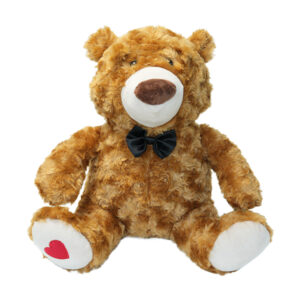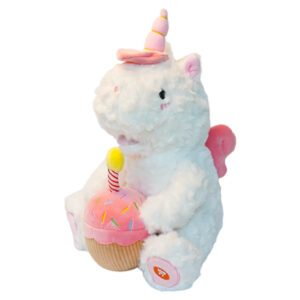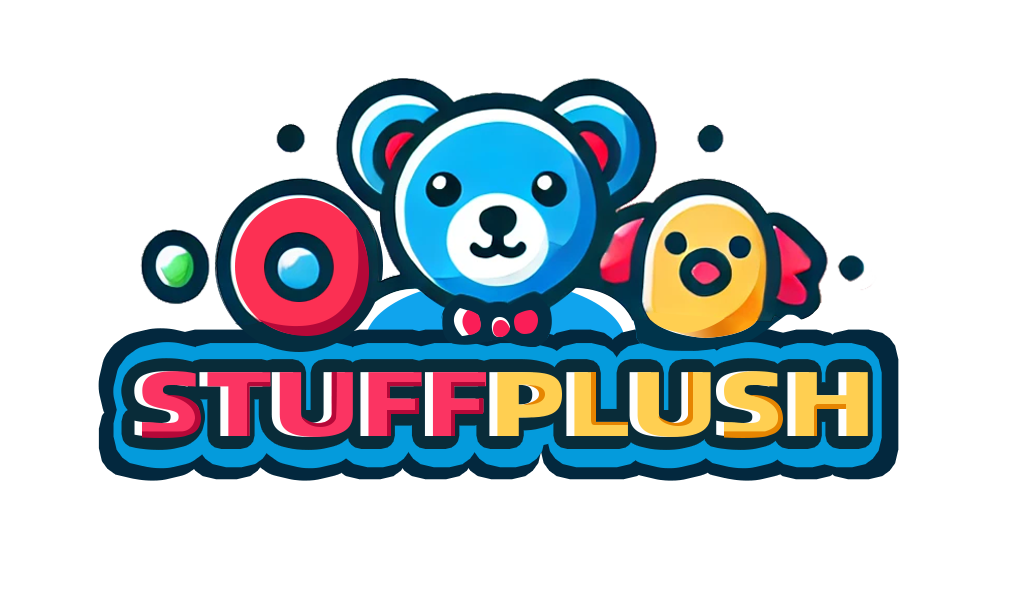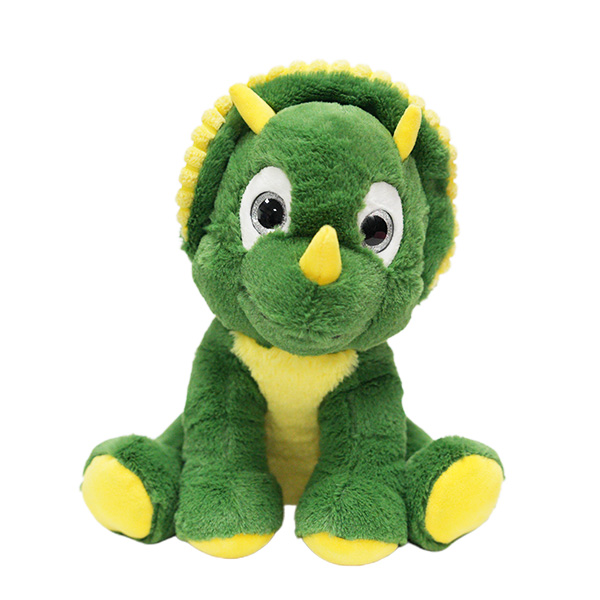Introduction: The Enduring Appeal of Stuffed Animals
Stuffed animals have been a common feature of children’s literature, gift-giving, and even recreational entertainment for over a century. From a teddy bear tucked into a pillow to a unicorn popular on social media, these soft creatures serve a variety of functions, including emotional support, decoration, and commercialization. Today, the market for stuffed animals is not limited to children’s toys; it extends to collectibles, home décor, stress relief for adults, gifts, and licensed characters. Recent market analysis suggests that classic teddy bears continue to hold a significant presence, while new categories, such as unicorns and novelty plush, are growing in popularity.
For retailers, manufacturers, and licensed professionals, understanding the most popular types of stuffed animals — why they sell, where the demand is located, and how trends are evolving — is crucial to the product strategy, planning of inventory, and marketing. In this article, we explore the fundamental categories, consumer behavior, brand/retail insight, regional differences, product design, and possible future trends in the space of animal-filled products.

Market Overview: Categories, Data & Demand
Before delving into specific animals, it’s beneficial to discuss the larger context.
-
Key Categories and their shares.
According to industry information, the five most important animal types represent over 70 percent of global plush animals: bears, dogs, cats, rabbits (bunnies), and fantasy/fictional animals (unicorns, dragons).
In a 2020 list of global ToyNews, the first position was held by Bears, followed by Dogs, Cats, Bunnies, and Elephants.
For instance, one source states that cat and dog plushies comprise approximately 25% of all plush toy sales in 2021.
-
Demand drivers
What inspires the popularization of particular animal figurines? Several factors are highlighted:
Emotional comfort & fondness: Stuffed animals recall the past, promote safety, and love.
Collectibility and social media: Plush lines that have limited editions or themed drops (e.g., Jellycat plushes) have a high degree of social media visibility.
Licensing: Characters from comics, movies, or games that are associated with pop culture increase demand (e.g., Pusheen, Hello Kitty).
Novelty and distinction: Oversized pets, or pets with specific features that attract the adult market (weighted, smelled).
Gift giving events and demographics: Plushes have a stronghold in all age groups – children, teenagers, adults, and special occasions (birthdays, Valentines, decorations, stress relief).
-
Regional and Demographic Dynamics
While the traditional teddy bear is recognized around the world, there are regional differences:
In Asian markets from East Asia, cats and kawaii-shaped animals are paramount.
Among the adult population, animals with larger sizes and “comfort” features have a higher propensity to be adopted; this is especially true via e-commerce.
Social media hotlines and seasonal releases (e.g., unicorn, sloth, cow plush) cause short-term increases.

Top Categories of Stuffed Animals (and Why They Sell)
Here, we discuss the most popular types of animals about reasoning and market analysis.
-
Teddy Bears – The Constantly Adored
No one discusses animals stuffed with a teddy bear. Bears have a consistent lead in plush categories around the world.
Why they endure:
Comfort, childhood, and friendliness.
Shape psychology: round features inspire compassion and safety.
Gift versatility: appropriate for toddlers, romantic gifts, décor, and adults.
Notes: A large teddy bear (e.g., 6 to 8 feet) is becoming more popular as a decoration or statement for adults.
Implications for retailers: Offer a variety of sizes of decorative items that are considered premium, and consider the effect of fabric and texture on the market.
-
Dogs and Cats – The Imitation of Emotion and Personal Relationships
Cats and dogs have the greatest number of clients in the plush industry. One estimate says that they contribute approximately 25% of all plush sales.
Reasons:
Many households have pet dogs or cats; plush is a substitute or supplement to that.
Collectible interest: realistic or cartoonish versions; Kawaii’s cats are popular in Asia.
Gift and décor segments: Adult consumers take in plush animals to decorate desks, rooms, or cushion areas.
Retail advice: Offer beneficial advice for children younger than 10, “character/collect” versions for teenagers or adults, and focus on pet-related features or styles.
-
Rabbits (Bunnies) – Soft, Fluffy, and Cuddly.
Bunnies are popular to the extent that they follow each other closely in popularity. One source states that bunnies are the second most popular type of stuffed animal (after bears) in a list.
The reason they are popular:
Softly-eared, flabby bodies, pastel, this is ideal for kids’ bedtime markets.
Seasonal power (Easter) facilitates a cyclic demand.
Opportunity: Create variations (giant bunny, extraordinary fabric, convertible plush) for the adult gift market.
-
Fantasy fauna and novelty animals
While traditional animals have the majority of the base, fantasy and novelty animals are increasing in popularity. For instance, unicorns are frequently listed as the most popular types in “most popular types” for the future.
Drivers:
Social media-friendly aesthetics (brilliant colors, shiny objects, wings).
Adult adoptions: unusual shapes, sizes, and colors used for fun or fashion.
Limited-edition packs (which produce a sense of collectibility).
Retail notation: Novelty plush may not need a large amount of SKU space, but it will benefit from trend-based, short-term releases, influencer marketing, and social-friendly visuals.
-
Elephants, Dinosaurs, and Other Species that Increased in size.
Beyond the top four, several other animals have a strong preference for specific niches.
Elephants: Specifically intended for baby gifts or décor because of their delicate images.
Dinosaurs: Asexual appeal, STEM-based branding, increased popularity in ” animal” plush information.
Other new favorites: Capybaras, sloths, highland cows, and even unusual mammals have appeared in popular reporting.
Strategy: Retailers may display a collection of elephants and dinosaurs in their stores or marketing campaigns.

Brand + Licensed Stuffed Animals: What Sets Them Apart
Understanding the reasons why certain brands are successful is essential.
-
Celebrated Brands
Some brands have a significant presence in the category because of their brand power, quality, collectibility, and distribution.
-
Characters with permission and cultural ties
Plush animals that are tied to popular media (cartoons, movies, influencers) attract consumers who are price-sensitive and collectors. For instance, a character from a popular series can increase the price and profit margin.
-
Quality, design, and placement
Premium plush brands are distinguished by the material they use (velvet, faux-fur, weighted filling), the finish they have (embroidered faces, tight stitching), and the packaging they have (collectors’ tags, authenticity proof).
Consumers are increasingly concerned with plush as a decoration or item of adult comfort; quality is paramount.
Consumer Segments & Use-Cases
The market for stuffed animals is complex and involves several different aspects of marketing.
-
Children ( Ages 0-8)
Primary purpose: to enjoy with friends, first toys, and give as a gift for birthdays or Easter. Key product attributes: softness, safe materials, simple animal shapes, and washability.
High animals: teddy bears, bunnies, elephants, cats, and kittens.
Marketing angle: friendliness, first, soothing sleep aid.
-
Tweens and Teens
Uses: collectibles, decorations for the bed or desk, and emotionally comforting. Featured interest: plush character, kawaii fashion, novelty animals (unicorns, sloths).
High animals: cats, dogs, unicorns, and other fantasy animals.
Retail approach: limited series, social media-supporting, and room décor.
-
Adults
Use cases: stress relief, décor, gift items, history, social media posts (plush furniture), oversized plush for home entertainment. Examples: giant bears, unusual animals with novel features.
Key animals: bears (larger), pets (for ornamentation), unusual animals as a statement piece.
-
Gifting and Seating
Stuffed animals still have a significant role in the holiday season — Christmas, New Year’s, and a baby’s first birthday. Animals with design-themed features (hearts, metallic fabric) have movement.
Seasonally popular animals: bunnies during the Easter season, highland cows that are popular now (the report: plush cow becoming more popular in 2025).

Emerging Trends in Stuffed Animals
To remain competitive in the market, understanding the emerging trends is crucial.
-
Social-Media-Fuelled Flows
Platforms like TikTok and Instagram have increased the demand for plush that photographs well. For instance, Jellycat toy animals are now being sold at a premium in response to viral demand.
Brands now create Instagram-able (pastel-colored, expressive faces, unique animals) characters to be shareable.
-
Volatile & ‘Emotional Support’ Puff
Adults who take on plush items of comfort (heavier, larger, lounge-shaped). This sector is expanding: reports indicate that giant teddy bears and oversized novelty pillows are popular in the adult market.
-
Novelty Animals and Customization
The base animal list is now expanding to include sloths, alpacas, capybaras, highland cows, and additional exotic animals. Customization (“personalization”, “create your own plush”) increases interaction.
-
Sustainability and Eco-Friendly Materials
As more people become aware of the dangers of toxins, plush manufacturers must take into account the recycled fabric, non-toxic filling, and removable covers (washable). Adult collectors are willing to pay higher prices for environmentally friendly manufacturing.
-
Limited Editions, Drops, and Licensing
Collectibility is transferred from Beanie Babies to more recent plush designs. Limited editions that are sold out fast, partnerships that are popular, or collaborations that are exclusive, all of these things increase the urgency and the value of resale.
Product Design, Manufacturing, and Retail Implications
For those involved in the industry (manufacturers, importers, and retailers), the demand for stuffed animals has a specific design and implications in retail.
-
Animal choice and SKU strategy
Maintain the core animals with a consistent demand (bears, dogs, cats).
Incorporate seasonal animals based on current trends (unicorns, highland cows, and dinosaurs) that will draw in the spikes.
Consider larger or more adult-oriented formats that would diversify.
-
Textile & Fashion Quality
For long-term success, purchase plush fabric, consistent stitching, and materials that are safety-certified (primarily for children).
For adult/target markets that collect, premium fabrics, stand-up frames (for large plush), and design are important.
The capacity to be washed and the long life of the product should be prioritized in the product description.
-
Packaging, Branding, and Licensing
The packaging must be appealing to all demographics – the children’s vibrant colors, the adults’ minimalist decorations.
Brand and character paraphrases increase the revenue.
Collectible cards, low numbers, and licenses end up with a secondary market value.
-
The strategy for retail and e-commerce.
Social-media-supporting visuals and influencer marketing facilitate the popularization of trendy plush.
Large plush or oversized formats are particularly effective in online stores (room décor).
Gift bundles, age-based marketing, and themed releases (e.g., a Valentine’s edition) that are based on age have a higher propensity to sell.
-
Inventory and Trends Management
Maintain a year-round supply: Core SKU.
Trend SKUs: limited supply, quick to market, and rotate out quickly to avoid having dead stock.
Utilize data from (POS, social media interactions) to foretell the upcoming animal craze (e.g., cow’s plush in 2025).
Case Studies: What Top Pages Show for “Most Popular Stuffed Animals”
This portion of the process extracts actionable information from the top-ranked content to support the strategy.
-
GoodLifeBean’s “top 10 most popular stuffed animals in 2025”
They include: Teddy Bears, Bunnies, Hello Kitty, Cats, Giant Dogs, Capybaras, Elephants, Monkeys, and Dinosaurs.
Key takeaway: while the first position is still the same (bears), novelty and larger categories (giant dogs, capybaras) have increased in popularity.
-
Popular brands of animal-filled food and the global popularity of animal-themed products.
Data indicates that bears have a lead (35-40% of the global plush population) and that cats and dogs, as well as rabbits, account for the majority of the population.
Insight: The majority of the volume is located in the core animals; novelty is primarily responsible for the margin and trend.
For producers: guarantee the production of large quantities of the core subject and have flexibility for the novelty.
-
The 20 most popular species of animals stuffed in 2025.
They focus on unicorns, sloths, and animals with novel features as they increase in popularity.
Today’s focus: Sloths (associated with entertainment) and unicorns (fantasy aesthetic) interest children and adults.
Retail strategy: Use everyday/relaxation-related messages (for adults) and social media images (for teens) to promote these species.
Future Outlook: What to Expect in the Next 5 Years
The category of stuffed animals exhibits multiple trends. Here is what future-oriented business participants should consider.
Adult Comfort and mental health: Plush animals, which are oversized and have a heavier weight, are intended to alleviate stress and promote relaxation.
Smart Plush and Interactive Capabilities: Plush that are connected to audio or AR may serve as a bridge between the toy and the technology.
Personalization & Hyper-Customization: Volumatic with name-embroidered species, “create your own” species, and bundling with gifts will all increase.
Sustainable materials: Stuffed with post-consumer fabric, these materials are biodegradable, and low-tech manufacturing processes will become significant differentiators.
Experience-based Plush Retail: Pop-up shops, social media-able installations, plush restaurants (see the stuffed-animal bed restaurant in Japan) to promote brand loyalty.
Data-Driven Trend Recognition: Using social listening, influencer data, and sales statistics, it will be essential to recognize the micro-species craze.
Conclusion
Overall, stuffed animals have maintained a lively and evolving nature in the toy, gift, and decoration industries. The longstanding power of bears is backed by a consistent demand; however, dogs, cats, bunnies, and novelty animals like unicorns or sloths have a significant role in growth. Trend-spotting retailers and manufacturers must have a balanced amount of core products along with novelty items; they must also invest in brand/storytelling, and they must adapt to social media and the adult comfort market quickly.
By combining the design of the product, the brand’s positioning, and the manufacturing of the toy, businesses in the plush toy industry can expect to both gain volume and have a premium income in the “stuffed animals” space.



